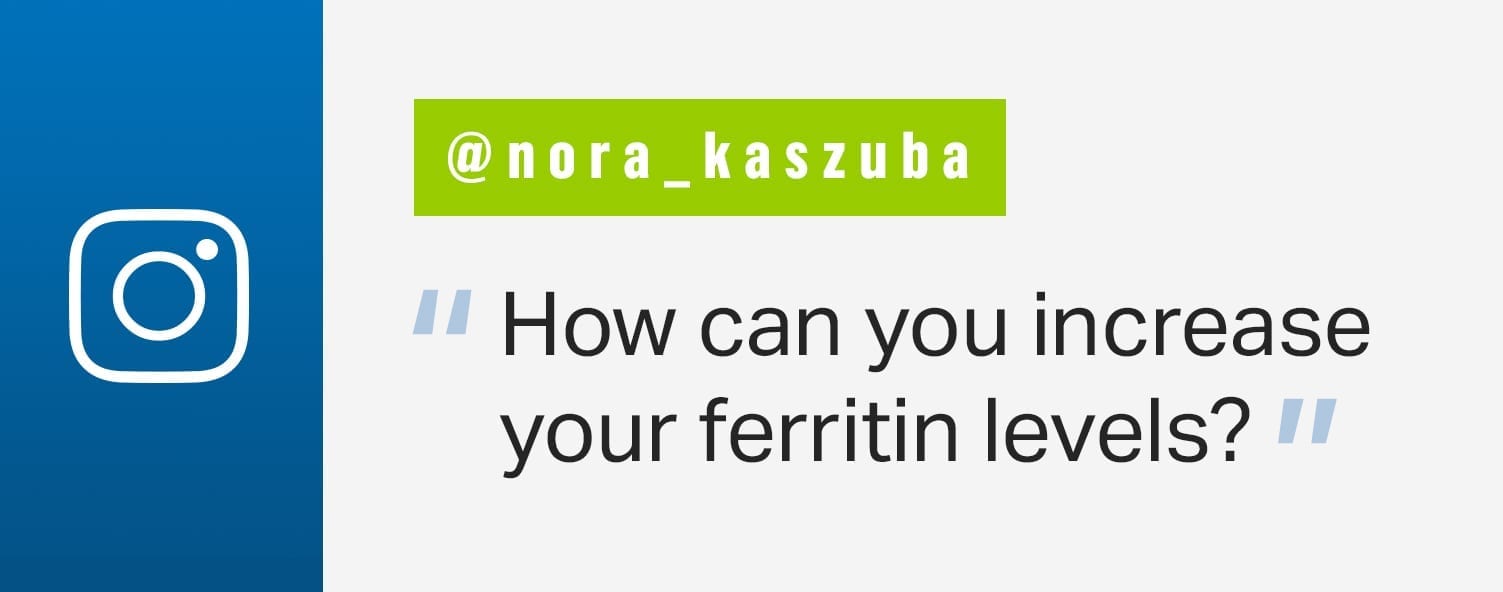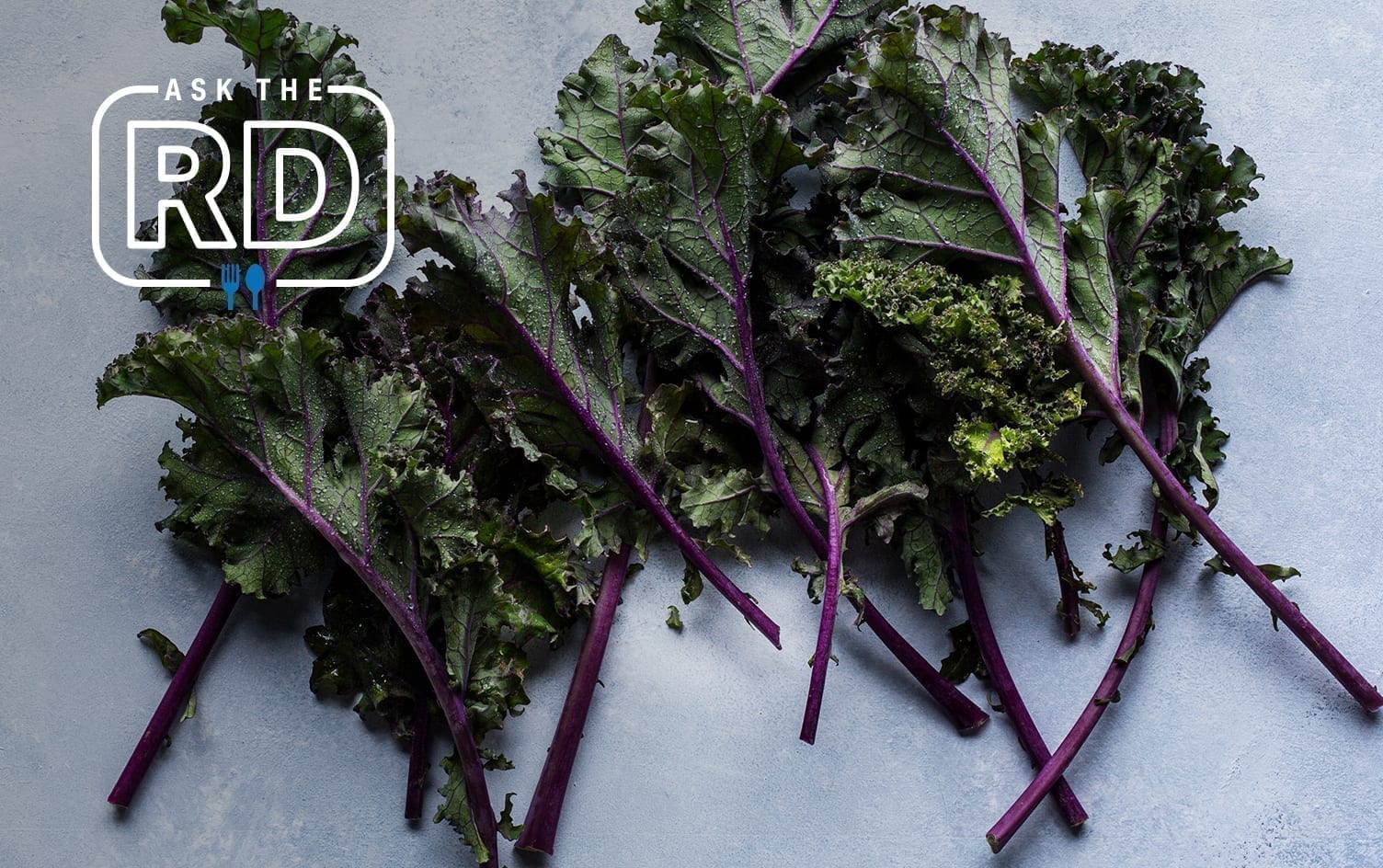

Ferritin is a protein in the blood that stores iron, and, if it dips below a certain level, can indicate iron deficiency. Not having enough iron can be a concern for many people, especially women of childbearing age, pregnant women, female athletes, endurance athletes and vegetarians.
Common symptoms of iron deficiency include fatigue and shortness of breath, which can greatly affect athletic performance as well as the quality of life in non-athletes. The good news is iron deficiency can often be corrected by taking a closer look at diet and making some tweaks. First and foremost, though, if you’re experiencing fatigue and shortness of breath (or nausea, headaches, cold hands and feet, brittle nails and low appetite), you’ll want to visit your doctor for a diagnosis.
The most common standard for diagnosing iron deficiency is to draw blood and test serum ferritin levels. Ferritin levels below <30ng/L indicate iron deficiency. Iron deficiency can occur with or without anemia, which is defined as iron deficiency severe enough to reduce red blood cell production, and diagnosed when blood hemoglobin is below 13g/dL in men and 12g/dL in women.
It’s important a physician oversees the implementation of treatment for iron deficiency and is informed by what caused or contributed to it. Common causes are a diet low in iron-rich foods, impaired ability to absorb iron, bleeding, pregnancy or women who are menstruating. If deemed necessary, iron supplementation should also be dosed and directed by a physician to avoid iron toxicity.
One epidemiological study found 82% of female endurance athletes were iron deficient, though it can also occur in male athletes. In addition to diet and menstruation in women, iron loss in athletes can also be induced by physical activity.
Exercise-induced iron loss may occur from a variety of mechanisms, such as gastrointestinal or urinary bleeding (often at a microscopic level), sweating and hemolysis, or the destruction of red blood cells. Hemolysis can occur due to the compression of blood vessels caused by vigorous contraction of muscles during non-weight bearing activity, and most commonly due to forces from foot strikes while running, a phenomenon termed “foot-strike hemolysis.” This makes runners, especially female and vegetarian runners, more susceptible to iron deficiency and can make or break training and performance.
READ MORE > ASK THE RD: CAN DIET REDUCE THE INFLAMMATION THAT CAUSES ARTHRITIS?
Consuming iron-rich foods regularly can be a first line of defense when it comes to maintaining adequate ferritin levels and preventing iron deficiency. Diet can also help treat some cases of iron deficiency if deemed to be the cause or a contributing factor. Dietary iron sources can be separated into two categories: heme and nonheme iron sources.
Heme Iron
Heme iron is found in animal products that contain hemoglobin, and is best and most readily absorbed by the body. These foods include:
· Beef
· Liver
· Pork
· Poultry
· Fish and shellfish
· Canned tuna
Nonheme Iron
Nonheme iron is found in plant foods, and is absorbed less efficiently than heme iron. It’s still important to include in your diet, especially for vegetarians and vegans. Nonheme-rich foods include:
- Lentils
- Chickpeas
- Black-eyed peas
- Other beans and legumes (e.g., kidney beans, black beans)
- Dark leafy greens (e.g., spinach, kale)
- Pumpkin seeds
- Sesame seeds and tahini
- Almonds
- Other nuts and seeds (e.g., hemp and flaxseeds, cashews, walnuts)
- Whole grains
- Fortified foods (e.g., cereals and other grains)
- Dried fruits (e.g., prunes, raisins)
- Blackstrap molasses
There are a few do’s and don’ts when trying to increase your intake and your body’s absorption of iron.

Doing so can increase your body’s absorption of iron significantly.
Examples are:
- Lentil soup with bell peppers
- Kale salad with lemon juice and olive oil dressing, plus fresh strawberries
- Beef or bison burger with baked sweet potato fries
- Oatmeal with almonds, kiwi and raisins
- Hummus with whole-grain crackers and a glass of orange juice

These beverages can impair iron absorption.
Research shows some iron is absorbed into foods cooked on cast-iron pans.

Pairing iron sources with foods like milk and cheese) can impair absorption.

Incorporate heme and nonheme iron sources into your diet regularly.
Whether or not you’re concerned about iron deficiency, it’s good to include iron-rich foods in your diet and to have a personal baseline for your body and activity levels. A complete blood count (CBC) can and should be performed at routine physicals. Don’t be afraid to ask your doctor to include ferritin with your labs, as sometimes it’s not included with a routine CBC. Being informed, assertive and proactive about your risk for iron deficiency is key for continued good health in life and sport.
Unlock an experience that’s like having a dietitian, trainer and coach — right at your fingertips. Go Premium for expert guidance and exclusive tools that will help you reach your personal health goals.





